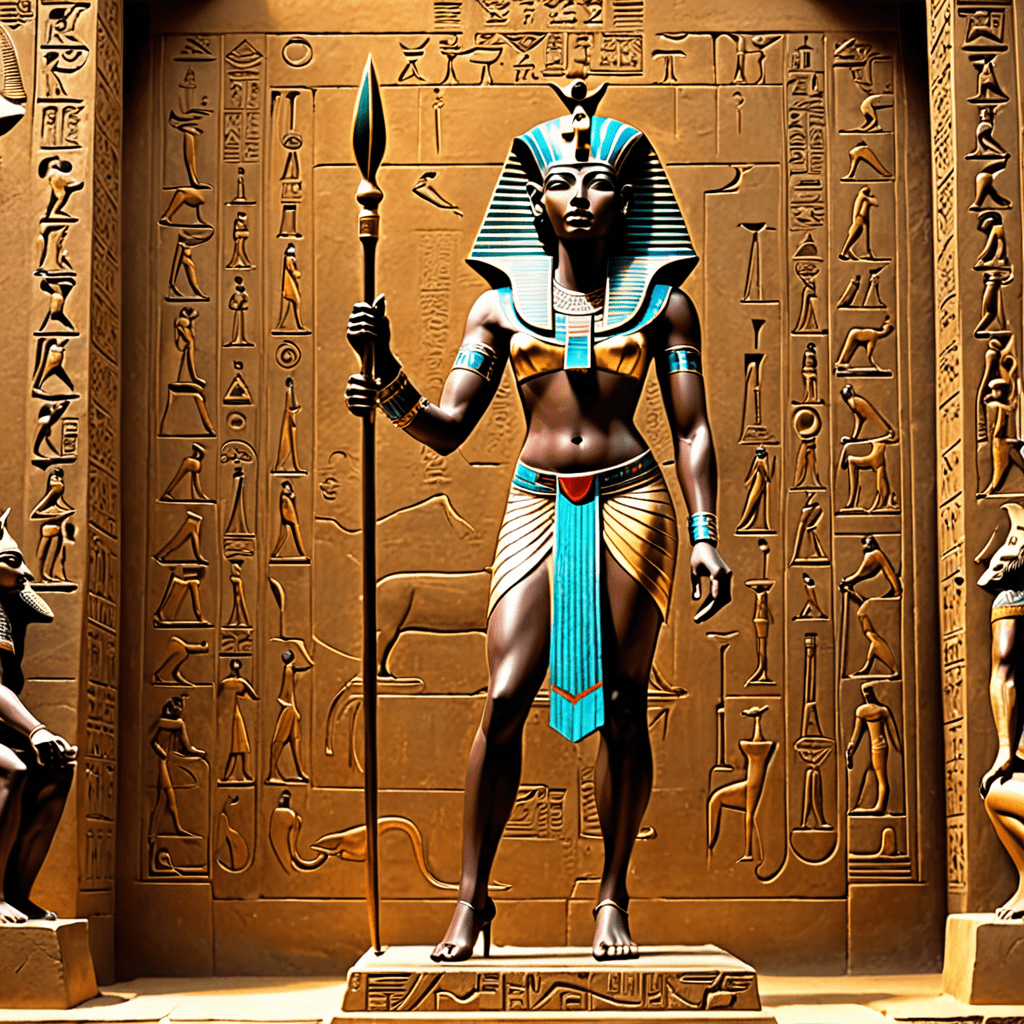The Myth of the Goddess Tefnut in Ancient Egypt
Introduction:
In Ancient Egyptian mythology, Tefnut is a significant goddess associated with moisture, rain, and the ferocity of nature. She holds a crucial role in the creation myth and is revered as a powerful deity embodying both chaos and order.
Who is Goddess Tefnut?
Tefnut is often depicted as a lioness-headed goddess or sometimes as a woman with the head of a lioness. She is the daughter of the sun god Ra and is considered the personification of moisture, representing the primeval waters that existed before the creation of the world. Tefnut is one of the fundamental deities in the Egyptian pantheon, symbolizing the life-giving and sometimes destructive nature of water.
The Myth of Tefnut:
According to Egyptian mythology, Tefnut, along with her brother Shu (the god of air), were created by the sun god Ra. Tefnut and Shu were sent by Ra to bring order to the newly created world. However, Tefnut grew distant from her father and brother, venturing into the desolate chaos beyond the ordered world. Her absence caused great concern, leading Ra and Shu to embark on a journey to bring her back.
After finding Tefnut, Ra and Shu managed to persuade her to return. As a result of her reunion with Shu, moisture was restored to the world, and the balance of nature was once again maintained. Tefnut is thus revered as the goddess who ensures the perpetuation of life through the presence of moisture, which is crucial for fertility and sustenance.
Symbolism and Worship:
Tefnut’s significance goes beyond her association with water and moisture. She is also linked to the concept of justice and divine order. In Egyptian cosmology, Tefnut represents the nurturing yet fierce aspects of nature, highlighting the dualistic nature of existence.
Throughout Ancient Egypt, Tefnut was worshipped in various temples and cult centers, with rituals and offerings dedicated to her to invoke her protective and life-giving powers. Priests and priestesses honored her through hymns and prayers, seeking her blessings for a bountiful harvest and sustainable livelihoods.
Conclusion:
The myth of the goddess Tefnut in Ancient Egypt reflects the profound connection between nature, divinity, and human existence. By embodying the essential element of moisture, Tefnut symbolizes the delicate balance of life and the forces of creation and destruction. Her enduring presence in Egyptian mythology underscores the importance of respecting and nurturing the natural world for the flourishing of all beings.
Myth of the Goddess Tefnut in Ancient Egypt FAQ
Who is the Goddess Tefnut?
Tefnut is an ancient Egyptian deity associated with moisture, rain, and the celestial waters. She is often depicted as a lioness or a woman with the head of a lioness.
What is the significance of Tefnut in Egyptian mythology?
Tefnut plays a vital role in Egyptian mythology as the daughter of the creator god Atum. She is one of the original gods in the Ennead, the group of nine deities in ancient Egyptian cosmology.
How is Tefnut connected to the creation myth?
In the creation myth, it is believed that Tefnut and her brother Shu were spat out by Atum as a response to his loneliness. Tefnut and Shu then went on to create the sky and the earth.
What symbols are associated with Goddess Tefnut?
Tefnut is often symbolized by the lioness due to her fierce and protective nature. She is also linked to the life-giving properties of water, symbolizing rebirth and renewal.
Is Tefnut worshipped in modern times?
While ancient Egyptian religious practices have largely vanished, some individuals still honor Tefnut and other Egyptian deities in modern-day spirituality and eclectic religious practices.



